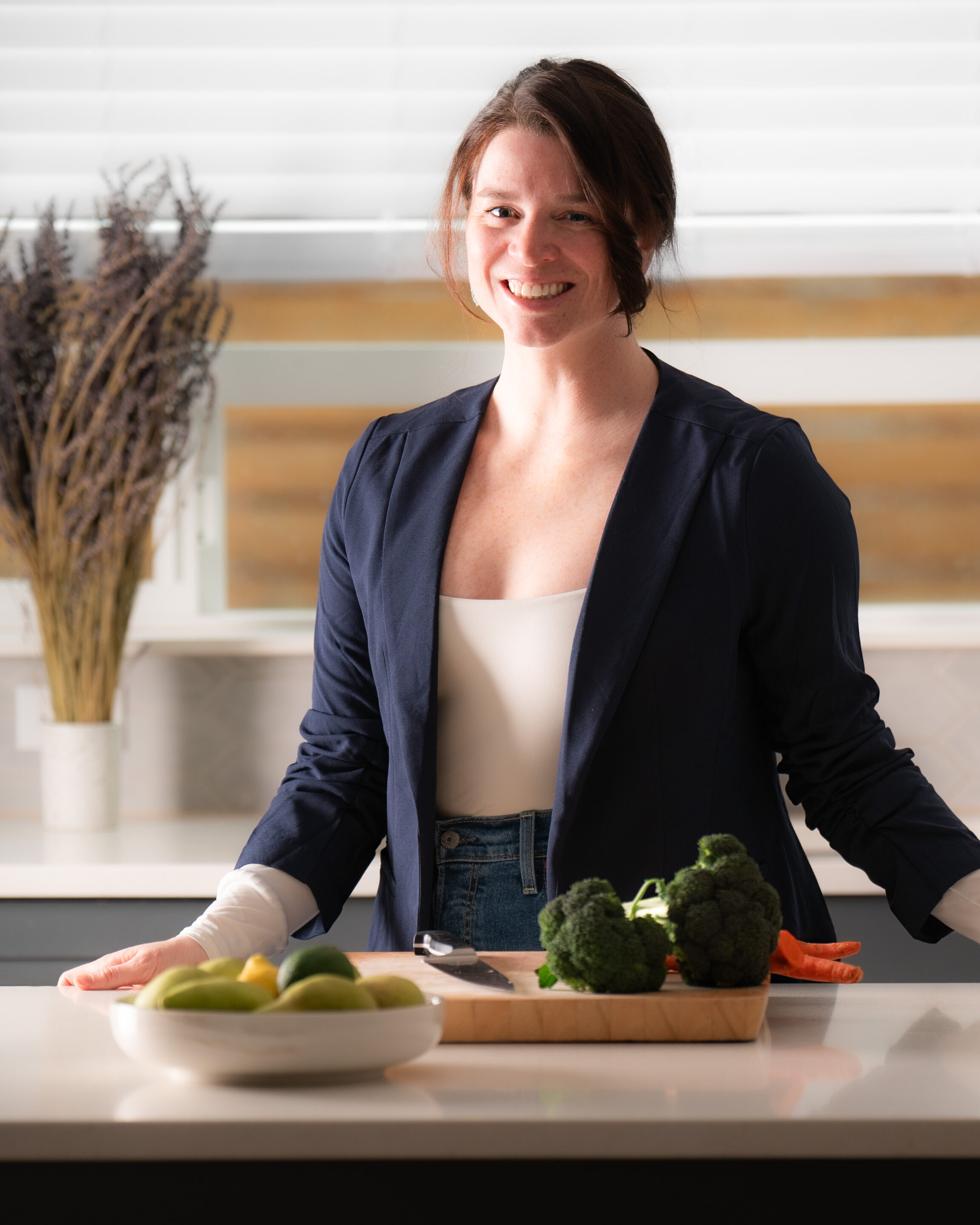Published: March 7, 2024
Last updated: January 6, 2025
My Flexitarian Pantry Guide
Having a well-stocked pantry and a comprehensive flexitarian pantry guide that supports your dietary goals is essential to having a balanced flexitarian lifestyle.
In this Flexitarian Pantry Guide, we’ll explore the essential ingredients that every flexitarian kitchen should have, ensuring you’re ready to create nutritious and satisfying dishes whenever hunger strikes.
Whole Grains
Whole grains like quinoa, rice, and farro provide essential carbohydrates and fiber for energy and satiety.
I also enjoy grains fortified with protein, high-protein rice, protein pancake mixes, and high-protein cereals.
Some of my favorites include:
- Pasta: Banza & Barilla Protein+
- Rice: RightRice & Kaizen
- Pancake Mix: Kodiak & Simple Mills
- Cereal: Catalina Crunch & Magic Spoon
(I am not affiliated with any of these brands, I just love them!)
Legumes
Dried legumes such as lentils, chickpeas, and black beans are versatile sources of plant-based protein, perfect for hearty soups, stews, and curries. I also love and keep canned beans and lentils on hand for convenient protein boosts in salads, tacos, and wraps.
Some legumes I like to have on hand include:
- Chickpeas
- Black Beans
- Pinto Beans
- Cannellini beans
- Butter Beans (also known as Lima Beans)
- Mung beans
- Red Lentils
- Brown Lentils
Nuts and Seeds
Almonds, walnuts, and cashews add crunch and healthy fats to meals, while also offering a dose of protein. Seeds like chia, flax, and pumpkin seeds are nutritional powerhouses, rich in omega-3 fatty acids, fiber, and minerals. And don’t forget about nut and seed butter!
Some of my favorite Nuts and Seeds include:
- Peanuts (technically a legume)
- Almonds
- Cashews
- Walnuts
- Pecans
- Hazelnuts
- Pine nuts
- Hemp Hearts
- Chia Seeds
- Sunflower seeds
- Pumpkin Seeds
- Flax Seeds
Plant-Based Proteins
Stock up on plant-based proteins for versatile meat substitutes that can be used in stir-fries, sandwiches, and more.
My new favorite way to prepare tofu is to freeze it and then thaw it out in the fridge. Once thawed the liquid squeezes out very quickly with some towels and just pressing it between your hands! Then just toss it in some marinade and throw it in the air fryer. The texture changes and the tofu sucks up all the flavor from the marinade.
Some of my favorite plant-based proteins include:
- Baked Tofu
- Firm or Extra Firm Tofu
- Silken Tofu
- Tempeh
- Tempeh “bacon”
- Tofurkey
Canned, Frozen, and Dried Produce
If loading your fridge with a colorful array of fresh fruits and vegetables, seems like a lot at the moment, try frozen or canned. Keep your freezer stocked with frozen fruits and veggies for quick and easy meal prep without sacrificing nutrition.
Canned
- Corn
- Peas
- Green Beans
- Pumpkin
- Sweet Potato
- Butternut Squash
- Tomatoes
Frozen
- Broccoli (the best in soups!)
- Mixed Vegetable Medleys
- Riced Cauliflower
- Spinach
- Kale
- Peas and Corn (listing these again because I ALWAYS have these in my freezer)
Dried
- Mushrooms
- Spicy Peppers
Herbs and Spices
Try cooking with a diverse selection of herbs and spices, including basil, oregano, cilantro, cumin, curry powders, paprika, and turmeric. Experimenting with different spice blends adds depth and complexity to your flexitarian meals.
Right now, in my spice drawer I have:
- Freshly ground cumin
- Turmeric
- Chili powder
- Ginger Powder
- Garlic Powder
- Onion Powder
- Black Pepper
- Cayenne Pepper
- Paprika (many types)
- Italian seasoning
- Basil
- Chives
- Dill
- Oregano
- Celery Seed
(I actually have a lot more than this but you get the idea!)
Citrus
Having citrus on hand can add lots of flavor to dishes. Don’t want to hold onto fresh ingredients, try the refrigerated bottles of lemon or lime juice. It’s not quite as tasty as fresh but is still an excellent addition to soups, salad dressings, grain bowls, and proteins.
Some Citrus I like to have in my citrus bowl include:
- Lemon
- Lime
- Oranges
Healthy Oils and Vinegars
Choose heart-healthy oils for cooking meals, making dressings, and mixing marinades. Don’t forget to stock up on your favorite vinegar to add acidity and brightness to your dishes.
Oils:
- Avocado Oil
- Olive Oil
- Coconut Oil
Vinegars:
- Balsamic Vinegar
- Champagne Vinegar
- White Vinegar (the best for making pickles!)
- Apple Cider Vinegar
Whole Food Sweeteners
Keep dried fruits like on hand to add sweetness and texture to baked goods and desserts. Moreover, bananas make for excellent sweet ingredients for smoothies, desserts, and “nice” creams.
My faves:
- Dates
- Cranberries
- Golden Raisins
- Pineapple (the best for a post workout snack)
- Mango
- Apples
- Watermelon (my favorite summer camping snack!)
Specialty Ingredients
Explore the world of specialty ingredients to add depth and umami to your dishes. Furthermore, experiment with other ingredients to infuse your meals with international flavors.
Some of my faves:
- Hot sauce (I have at least 5)
- Nutritional yeast (amazing on popcorn)
- Tahini (great for sauces like my Spicy Tahini Noodles recipe)
- Miso paste
- Soy sauce
- Curry paste
- Coconut milk
- Fish Sauce (not plant based but flexitarian approved)
- Oyster Sauce (not plant based but flexitarian approved)
- Sauerkraut
- Kimchi (I make mine from scratch!)
In Conclusion
By stocking your flexitarian pantry with these essential ingredients, you’ll be well-equipped to create a diverse range of delicious and nutritious meals that celebrate the abundance of plant-based foods while allowing for occasional indulgences in animal products.
Did I forget anything? Add your favorite flexitarian pantry staple in the comments!
Like This Article?! Check Out These Other Flexitarian Articles
Flexitarian 101: Your Practical Guide to Becoming a Flexitarian
Hi, I’m Sarah Harper, a Registered Dietitian Nutritionist passionate about cooking, eating, and sharing all things food! At The Addy Bean, you’ll find a variety of flexitarian recipes designed to inspire and empower you to explore the delicious world of plant-based eating. My mission is to make plant-forward meals approachable, enjoyable, and part of your everyday life!














0 Comments